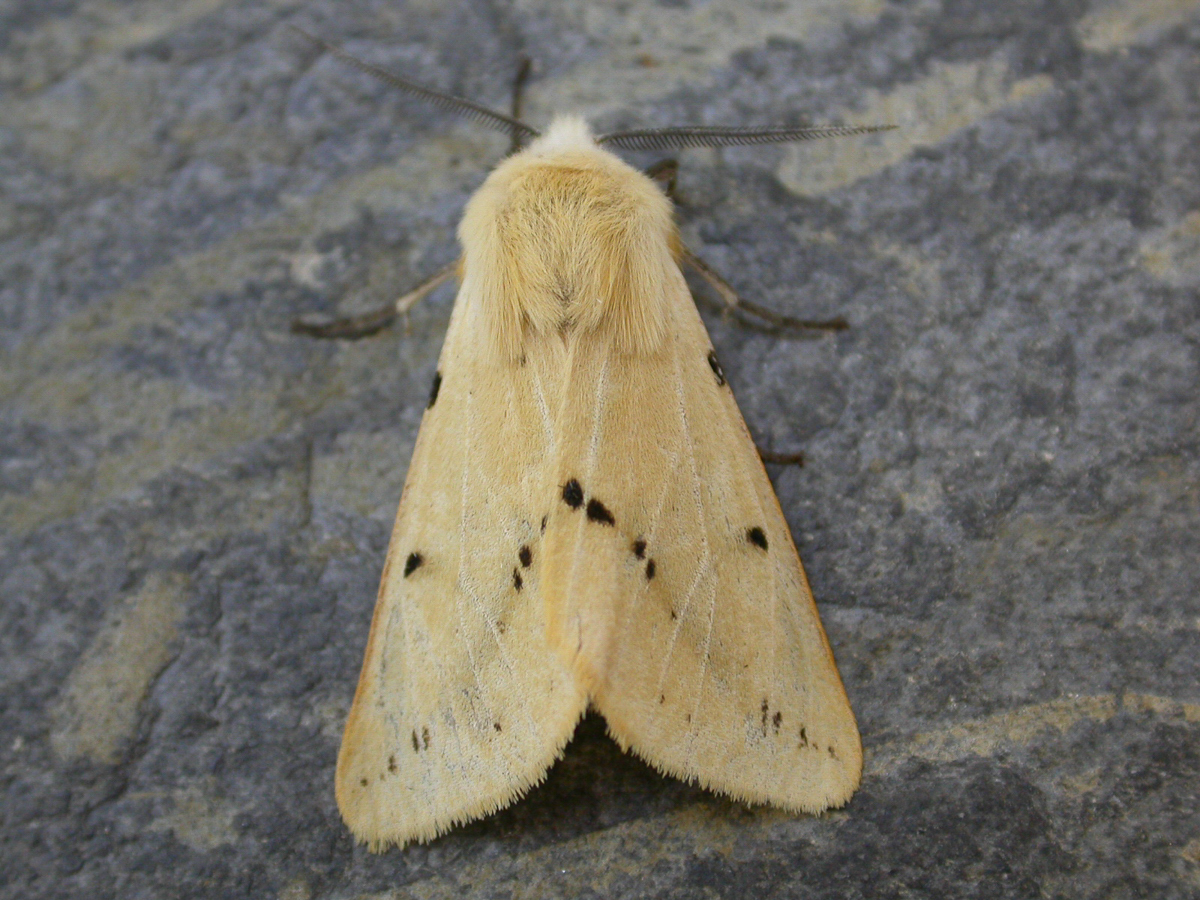
Photo © Andy Mitchell
The buff ermine ( Spilarctia luteum ) is a moth of the family Erebidae. It is sometimes placed in the genus Spilosoma . The species was first described by Johann Siegfried Hufnagel in 1766. It is found throughout the temperate belt of the Palearctic region south to northern Turkey, Georgia, Kazakhstan, southern Siberia (excluding Buryatia), eastern Mongolia, Amur Region, China, Korea and Japan.
The wings of this species are buffish yellow (the males tend to be more yellow than the females) and are typically marked with a diagonal row of dark spots on the forewing and a few other scattered spots on both forewings and hindwings. The extent of black markings varies considerably, however, from almost spotless examples to largely black melanic forms. The wingspan is 34-42 mm. The species flies from May to July in the British Isles. This may vary in other parts of the range. It is attracted to light.
The larva is pale brown and very hairy. It is polyphagous, feeding on a wide variety of trees, shrubs and herbaceous plants (see list). This species overwinters as a pupa.
Some larval food plants include:
Source: Wikipedia
The primary larval foodplants are Balm (Melissa officinalis), Barberry (Berberis vulgaris), birches (Betula spp.), Blackthorn (Prunus spinosa), Common Ivy (Hedera helix), Common Nettle (Urtica dioica), Common Ragwort (Jacobaea vulgaris), Elder (Sambucus nigra), ferns, Grey Willow (Salix cinerea), Hawthorn (Crataegus monogyna), Honeysuckle (Lonicera periclymenum), Hop (Humulus lupulus), jasmines (Jasminum spp.), Nipplewort (Lapsana communis), Pedunculate Oak (Quercus robur), Rowan (Sorbus aucuparia), virginia-creepers (Parthenocissus spp.), whitebeams (Sorbus spp.) and Wild Plum (Prunus domestica).